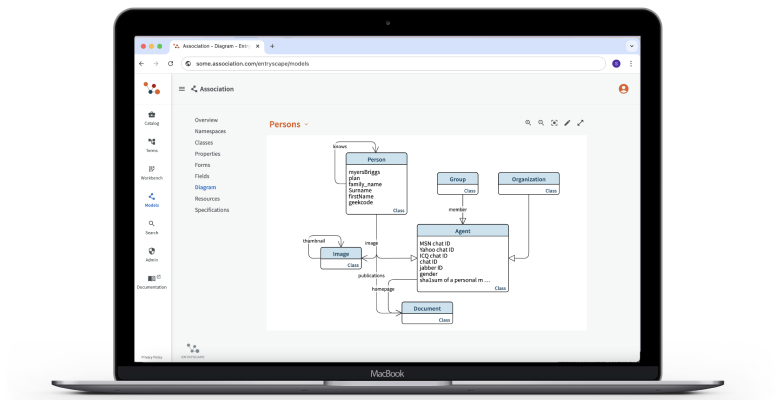Develop your Linked Data model
Do you need to express an information model for linked data? Are you thinking of how to create a graph database, a data portal, or simply organizing your organization’s datasets? If so, you’ve come to the right place! Let us explain why the answer lies in Entryscape Models.


Built on Linked Data and Open Standards
EntryScape Models is the data modeling tool for linked data that ensures outstanding interoperability and reusability. EntryScape Models is built on open formats and linked data standards such as RDFS, SKOS, PROF and SHACL.
The application profiles you create can be used for generating specifications, validating data, editing as well as presenting the information.
Centered on Application Profiles!
Why do you need EntryScape Models?
Here we present three examples of many potential use cases for EntryScape Models. EntryScape Models is not constrained to any specific information model and you can define your own from scratch or repurpose any existing to your needs.
1. Adapt DCAT-AP to your country or domain
EntryScape Models excels in maintaining such adaptations as a refinement on top of the stock version of DCAT-AP. The benefit is that you can define the profile by what makes it unique rather than a deep copy that needs to be kept in phase with all changes to the original model.
2. Application Profile of Dublin Core Terms
EntryScape Models is one of the few tools that has explicit support for building application profiles and it has been developed with the requirements of the Dublin Core community in mind. Furthermore, Dublin Core is already available as a model for reuse in the library of EntryScape Models.
3. Subset of Schema.org
A good example of this is the tourism domain where the classes LodgingBusiness, FoodEstablishment, Place, Event, Trip and Store corresponds to the backbone of the information model.
